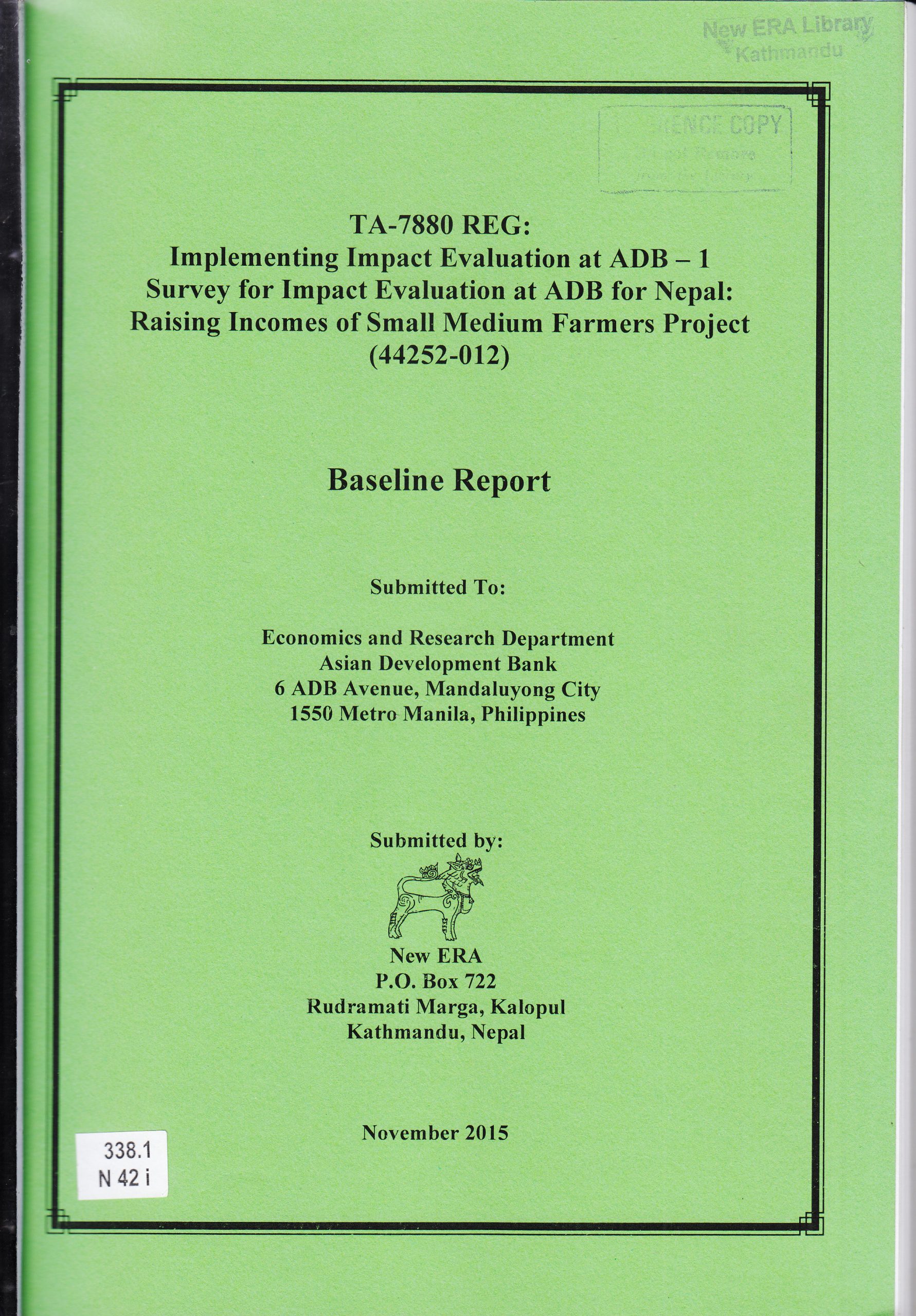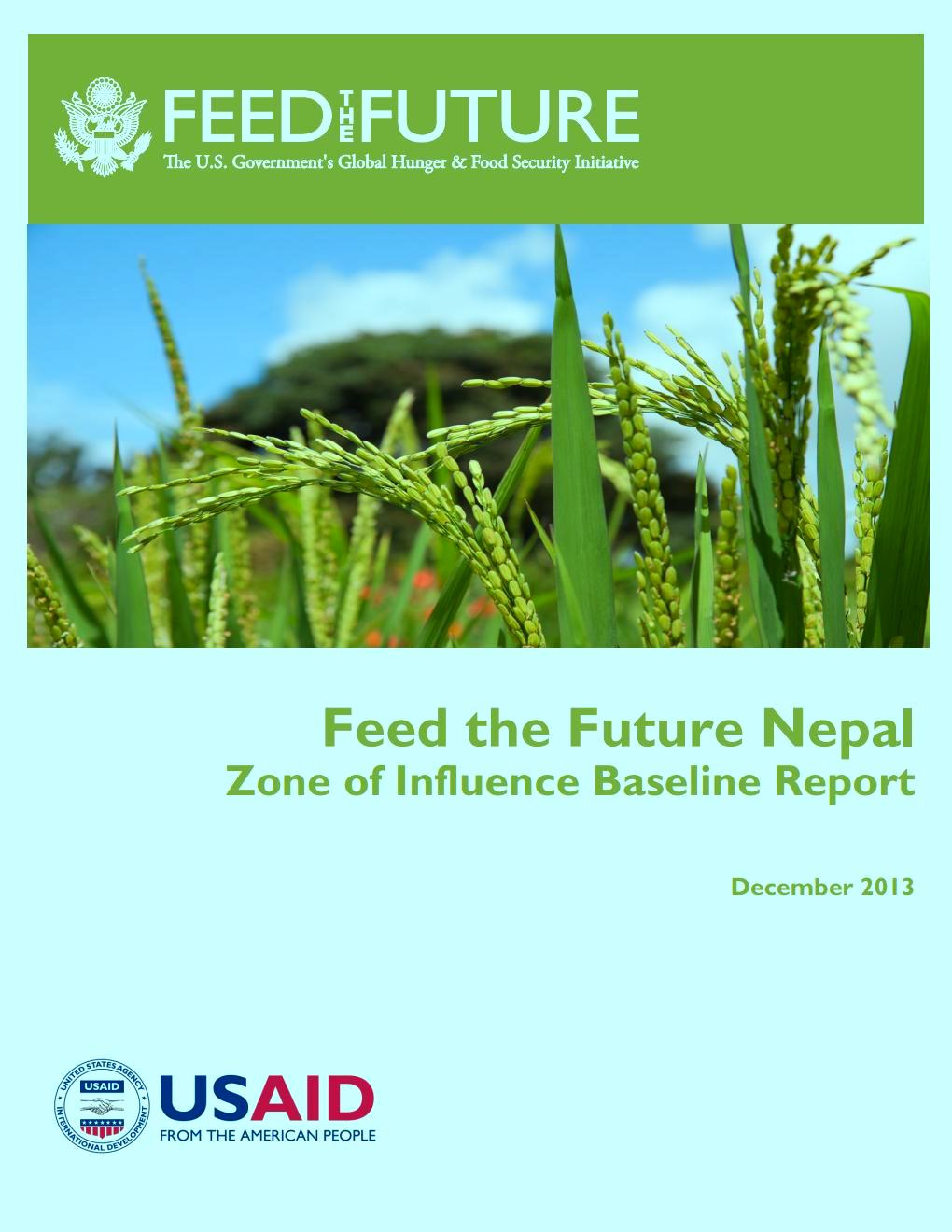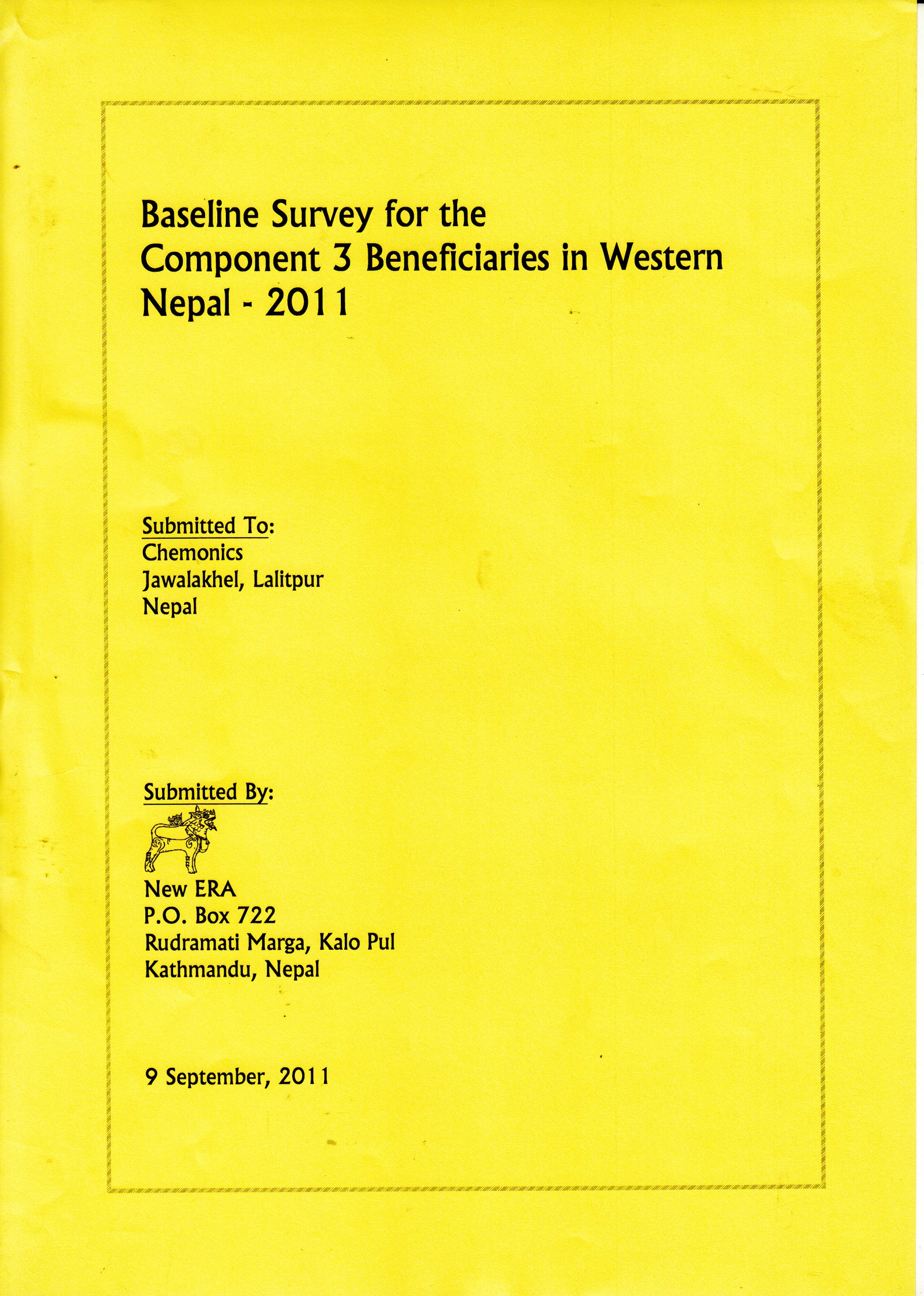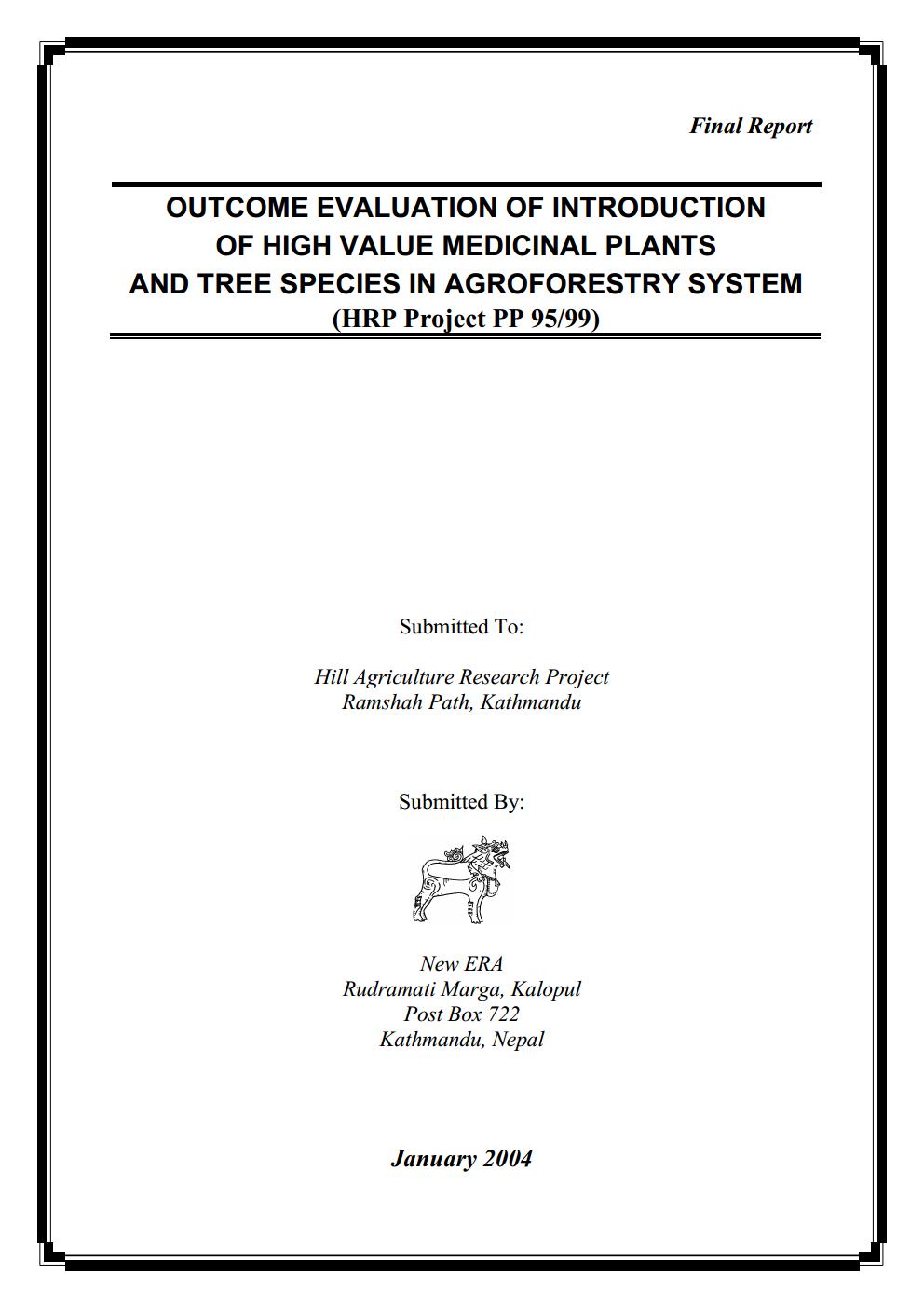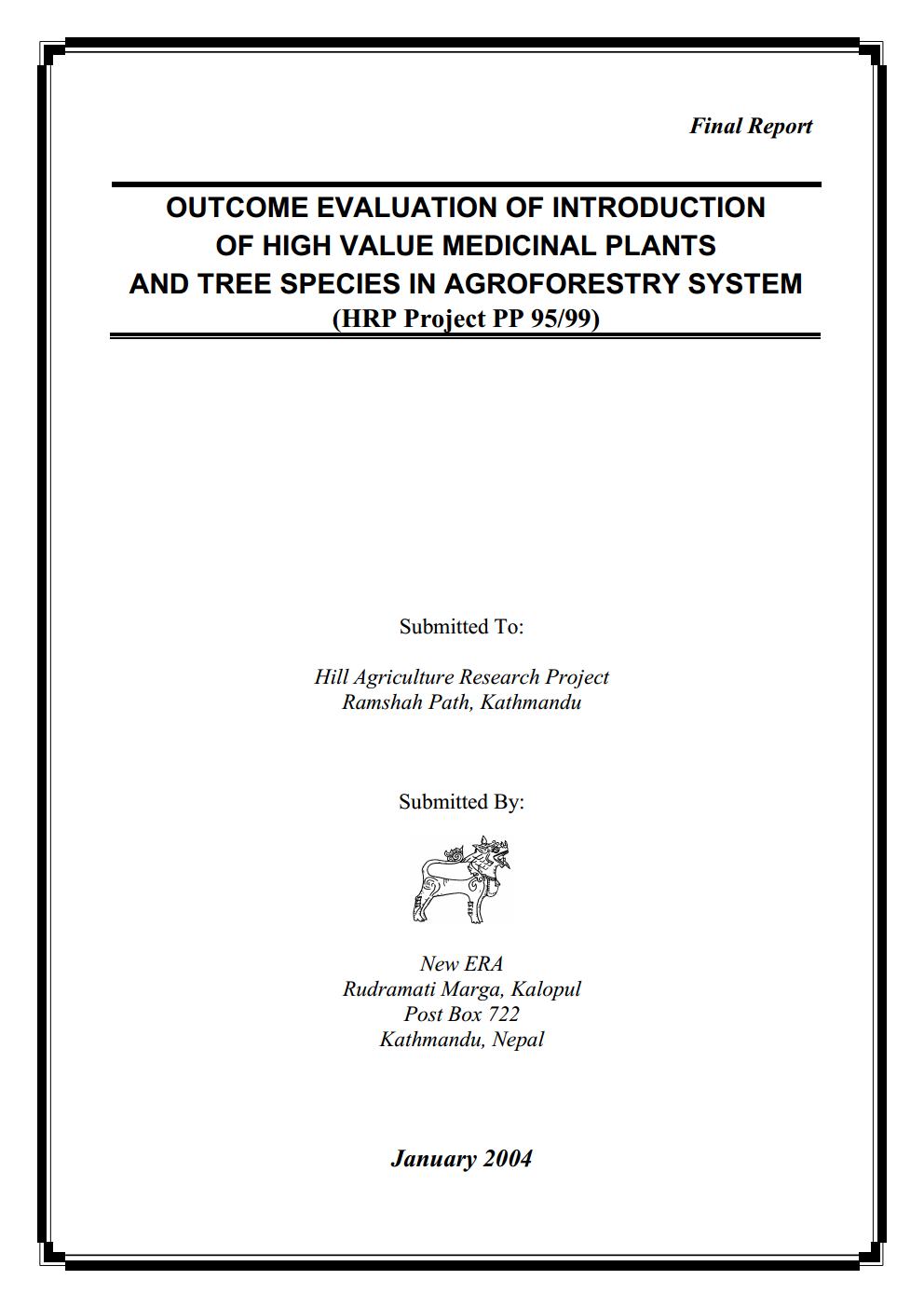The Raising Incomes of Small and Medium Farmers project was implemented by Ministry of Agriculture Development (MOAD) in financial supported by ADB. The main aim of the project was to reduce the market and business risk for small and medium farmers by supporting to diversity into high-value commodities in the 10 districts of Mid-west and Far-western Development Regions of Nepal by establishing market links, building post harvest value chain infrastructure, providing capital for inputs and better agricultural technology. This study was to assess the causal impact of the project on the incomes of the farmers and other measures of household well-being. The study assesses the mechanisms of farmers’ cooperatives; sustainability and success of these groups especially in the context of farming.
Report Type: Agriculture
Feed the Future Nepal Zone of Influence Baseline Survey
Feed the Future (FTF) program was initiated US government in response to tackle global food security challenges. FTF focuses on growth of the agricultural sector and improvement in nutritional status in many food insecure countries around the world. Since Nepal is identified as one of the 20 food insecure countries, a five year FTF project, locally termed as Knowledge-Based Integrated Sustainable Agriculture and Nutrition (KISAN) Project is being implemented from 2013 onwards in 20 districts of western Nepal. This survey was to collect baseline indicators on dietary diversity, feeding behaviors, nutritional status of women and children in households. The study also assesses poverty situation, hunger, income and expenditures and women’s empowerment in the study districts.
Baseline Survey for the Impact Evaluation of the Agriculture and Food Security Project
The Agriculture and Food Security Project (AFSP) funded by the World Bank was implemented by Ministry of Agriculture Development in 19 districts of Far-western and Mid-western Development Regions of Nepal. The main goal of this five year (2013 – 2018) project is to address low agricultural productivity, food security and save the maternal and child health in the project site. This study obtained baseline data on agriculture practices, productivity of foodgrain, livestock, food habit, and socioconomic characteristics. The study also assesses production of promoted crops, usage of inputs such as improved seed and fertilizer, food consumption practice, food diversity habit, demand of nutritious food for young children and pregnant and breastfeeding mothers.
Baseline Survey for the Component 3 Beneficiaries in Western Nepal
Nepal Economic, Agriculture and Trade Activity (NEAT) program was designed and implemented with financial assistance of USAID in 14 districts of Western and Mid-western Development Regions of Nepal. The main goal of the program is to promote economic growth, reduce poverty and improve lives in Nepal. This survey was conducted to obtain baseline information especially on off-season vegetables, staple crops and small livestock, those activities are running under the component 3 – food security of the program. The survey measured the changes in gross margin per unit of land of animal and prevalence of households with moderate to severe hunger of the program. The data were collected from all 8,000 beneficiary household of the program districts.
A Joint Dissemination of an Integrated Control of Parasitic Nematodes in Small Ruminants Raised in Small Scale Systems in Developing Countries
This project was being conducted by New ERA under the LPP program and is funded by DFID. The project has the following objectives: (1) to gather baseline information about gastrointestinal (GI) nematode infections and their effect on the productivity of small ruminants kept under small scale farming system; (2) to promote among small ruminant keepers a concurrent use of three strategies, the FAMACHA system, commercial tannin drenches or other anti-parasitic plants and nutritional manipulation as a new approach to the control of GI nematode infection; and (3) to determine a possible cost-effective combination of the three strategies that will give the best results and compare this with the standard/usual control methods.
Using Livestock to Improve the Livelihoods of Landless and Refugee Affected Livestock Keepers in Bangladesh and Nepal
This study identifies ways in which the livelihoods of landless and refugee-affected people in Nepal and
Bangladesh can be improved by keeping livestock. To gather information and identify more productive livestock
keeping techniques, the study used three approaches: consultation with the landless poor on their aspirations
and constraints; examination of the approaches and impact of livestock projects designed for the landless; and
evaluation of potential models and research findings by landless people. (Click for full document)
Increasing Contribution that Goats Make to the Livelihoods of Resource Poor Livestock Keepers in the Himalayan Forest Region
About 47 percent of Nepalese people live below the poverty line and 85 percent of these people keep goats.
Income from goat rearing contributes up to 50 percent of the livelihood of resource poor livestock keepers
(RPLK). Landless and nearly landless people often have 5 to 6 goats that act as a safely net when other sources
of income fail. This safety net is most useful at the end of the dry season and beginning of the monsoon.
However, there is also an increased risk of disease and death of goats at this time. Disease can force farmers to
sell goats at a lower price. This study identifies the cause(s) of such losses and appropriate strategies to reduce
them. These strategies will be promoted by NGOs, private companies and government institutions. (Please click here for full document)
A Review of Research Impact, Responsiveness and Future Priorities in the Agriculture Sector in Nepal
This study was conducted in partnership with ITAD Ltd. and BDA Nepal Pvt. Ltd. with funding from DFID. The review assesses the impact of research carried out in Nepal by various governmental and non-governmental organizations on agriculture and the agricultural sector’s responsiveness to such research. The review also identifies and recommends future priority areas for agricultural research in Nepal. The review team gathered information using various tools and techniques including literature review, field visits, focus group discussions, individual interviews, office visits, group meetings, and surveys. Field work was done by a Nepali team who submitted a draft report. The work was supported by a three-member team from the United Kingdom who were extensively involved during the planning and report writing phases of the review
Outcome Evaluation of Improved Productivity in the Upland Rice Cropping System of the MidWestern Tars and Hills Using Legumes
The Nepal Agriculture Research Council (NARC), with financial support from HARP, implemented a research
project called “Improved Productivity in the Upland Rice Cropping System of the Mid-Western Tars and Hills
Using Legumes” in the Districts of Surkhet and Dailekh, Nepal. New ERA was commissioned by HARP to do an
outcome evaluation of this project. The evaluation assesses the effectiveness of the research project in terms of
research output, delivery, dissemination, uptake and adoption, and management.
Outcome Evaluation of Introduction of High Value Medicinal Plants and Tree Species in Agroforestry System
Dabar/Nepal, with financial support from the Hill Agriculture Research Project (HARP), implemented a program to introduce high value medicinal plants and trees in four hill districts of Nepal. The program hoped that the cultivation and marketing of medicinal plants and trees could be a viable source of additional income for rural farmers in Nepal. New ERA was commissioned by HARP to conduct an outcome evaluation of this program. The evaluation assesses the implementation performance, output delivery and transparency of the project. The objective of the evaluation was to identify lessons learned and to make useful recommendations to improve HARP projects in the future.



